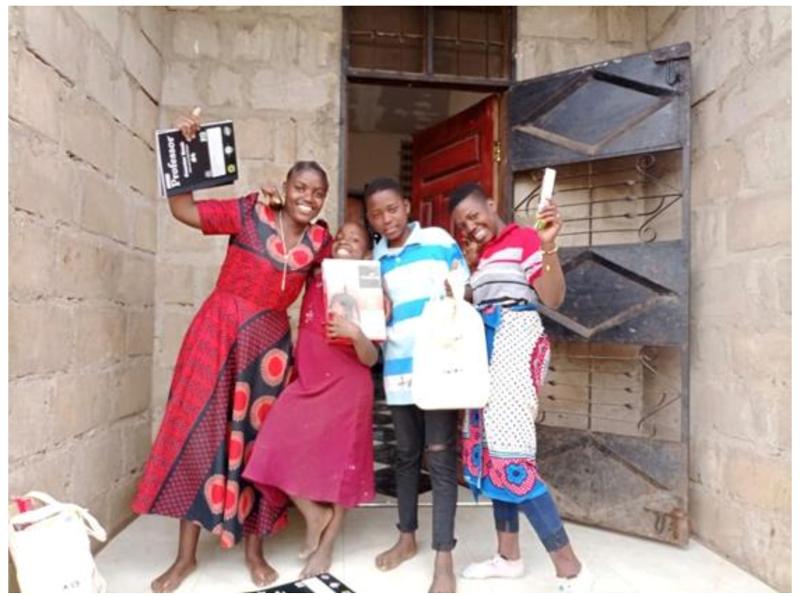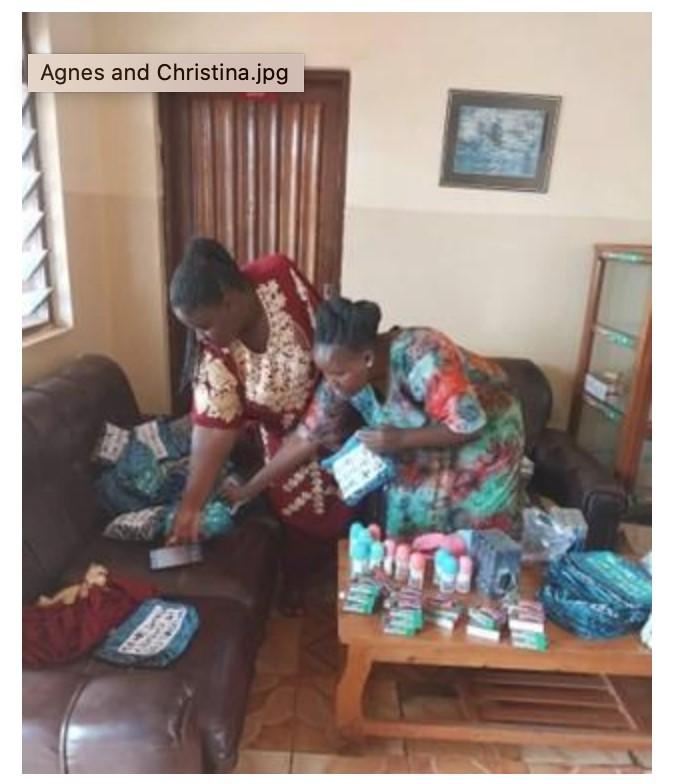AKMA 3 - Expedition 2023
By Valentina Lanci
The AKMA 3 cruise (April 29-May 10, 2023) on board RV Kronprins Haakon was organized within the project AKMA Advancing Knowledge on Methane in the Arctic (n.287869), funded by the Research Council of Norway.
The cruise focused on the interplay between changing ocean conditions and the physical, biological, and chemical response of extreme environments such as methane and oil seeps through a multidisciplinary study of sites in the Barents Sea.
The AKMA 3 oceanographic expedition turned out to be one of the most interesting from a scientific point of view. The team on board has discovered the second ever mud volcano found within Norwegian waters, the Borealis Mud Volcano. To know more, read the press release HERE and the press review in NEWS.
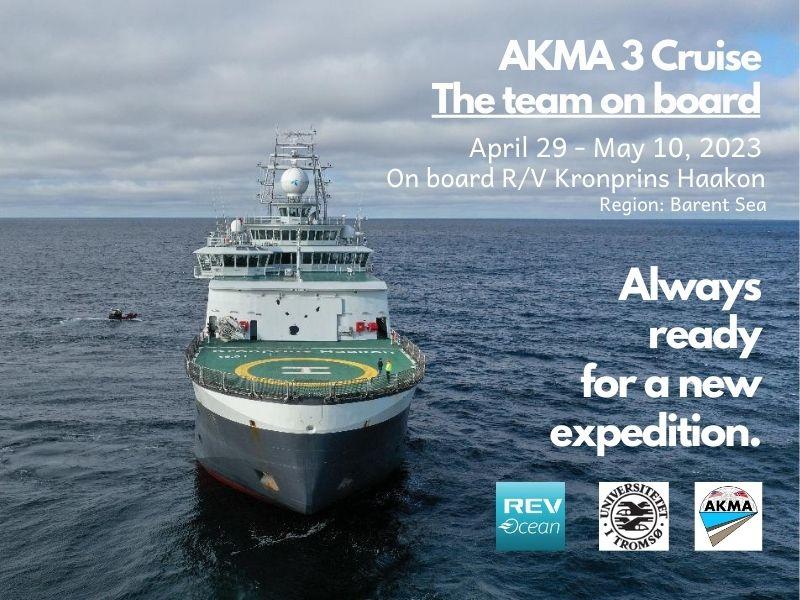
The Rev Ocean and the Ocean Census team have also been joining the cruise to investigate methane activity in the seabed. The Ocean Census programme funded by The Nippon Foundation and managed by Nekton, will accelerate the discovery of marine species globally.
Below, the short documentary realized during the expedition in collaboration with REV Ocean.
Below, you can read some of their blogs.
I am part of AKMA 3 expedition to lead a literature project involving science outreach. I am third year PhD student in La Rochelle in mathematical physics at LaSIE laboratory. With other people, I built my project as a mixed one between the doctoral school of my lab and La Maison de l'Étudiant, being a structure that helps students to develop cultural ideas and make them concrete. I write about events of the mission, scientific results, the ship, the environment or even fictional ideas and whatsoever. I also care about science outreach so that I incorporate what I learn on board chatting with more experienced scientists. And I learn a lot, since I discover a lot of fields, I knew nothing about: geophysics, chemical aspects of sea bottom, biology, microbiology for instance. What I write might even contain more than that, but it is hard to say by now, since I am currently creating it. I join pictures of notebooks that go with me all day long here and an extract of some writing.
Monday 1st of May, 14:50
This morning, I finish my breakfast staring at the sea with Truls while chatting on the last French retreat reform. Irene enters: conditions are idealistic, the flying drone, Pameli at sea surface and the R.O.V. will go out today. A part of the game of the expedition is the simultaneous work of instruments at various steps going from space to sea bottom. Irene keeps on: Giuliana clearly stated how much it matters to film deployment of the material.
"- Truls, where is the camera 360°?
- Probably in the container on deck 2?"
It follows a sequence of corridors full of doors, stairs and other corridors. The container of deck 2 is full of boxes, some of them not open, some others with more boxes, but no camera. Stefan probably has the solution. Truls is almost sure he met him deck 5. It follows a sequence of corridors full of doors, stairs and other corridors. Stefan could have indeed been deck 5 to have a coffee or a snack, although he is actually not. Meanwhile, it is certainly possible that he is in laboratory, therefore follows a sequence of corridors full of doors, stairs and other corridors. A few failed tries deck 3 are enough to warm up our hopes again. Stefan is with Claudio at chemical lab. He has even a great idea on the place of the camera 360°.
"Hum, it must be in a container."
His suggestion admits as natural consequence a sequence of corridors full of doors, stairs and other corridors, we try a bunch of all similar rooms. We come in a room that looks like the others with a metal container that looks like the others, and behind the door, a twin one, containing boxes, the opening of one of them revealing the camera 360°.
In the same pack are spots reserved for instruction notice or accessories, but some of them are empty: the charger is missing. We must find Giuliana. She has been seen deck 7 in the working room. It follows a sequence of corridors full of doors, stairs and other corridors. A small team working on screens and sheets of paper reacts by joyful welcomes to my head through the doorstep, but none of them are from Giuliana. She is not there. Someone suggests: "Try the R.O.V. pilot cabin deck 6?" It follows a sequence of corridors full of doors, stairs and other corridors concluded by a face to face with Giuliana. She is sitting behind the pilot, both of them facing giant screens, live commanding the exploration of a sector of Arctic Ocean sea bottom. She smiles and thinks: "The charger of the camera 360°? Not a single idea!" We meet Stefan again. AKMA 3 has a stock of adapters, cables and chargers of various types. No try is fruitful. Maybe the material wealth of Haakon could help us? It would suffice for that to ask the crew. The instrument room is deck 7. It follows a sequence of corridors full of doors, stairs and other corridors. In a great corner of a room, between shelves, a man leans on a table. There is not only a crazy collection of chargers consciously piled in a random manner; he also explains to me the ruling of a machine that actually cook up the desired adapter. I leave him with a cable he just proved the good working. Right before that, he has printed and sticked a label, with the help of a dedicated machine, on which figures two small lines: "HK INSTRMEN". In the end, I take a walk to meet Irene deck 3 following a classical scenario.
In the educational lab, we plug the camera, charge it and synchronize it with a smartphone. Half an hour later, it captures on the back bridge the first sailing of Pameli, dozens of curious seagulls celebrating by dancing around, while Claudio flies a drone from the front bridge and the R.O.V. films way deeper jellyfishes, cods, planktons, corrals.
Part of "Tourbillons", translated from French by the author


Hello! My name is Vasiliki Petsakou, I am twenty-nine years old, and I come from Greece. Actually, I grew up on a small, beautiful island in the northeastern Aegean Sea, called Ikaria, but I'll come back to that later. My main degree is in Geology, as I am now in my second year of my MPhil in Oceanography and Marine Environmental Management at the National and Kapodistrian University of Athens.
As I already mentioned above, I grew up in Ikaria, and lived there until I was seventeen. Ever since I remember myself, sea and mountains were my biggest passion. That is the main reason why I ended up becoming a marine geologist. The nature of Ikaria combines both elements, like a small continent, so luckily for me, the path was always crystal clear.
At 2021 I started my MPhil studies in Oceanography because this science fascinates me. The fact that we have to explore a world, which we are not able to reach is mind-blowing for me. Oceans are like space, you can see, observe, imagine, conclude. Your mind is free. That’s why my goal is to become more of a component in my field. I need to know everything about oceans and how to work around them.
Almost a year ago, Professor Nomikou from NKUA University informed us about the BridgET summer school, which will take place in Santorini in October 2022. The application deadline was until the first of June, but for us May and June are usually exam months. So, as expected, in all the fever of reading, I completely forgot about the deadline. June 30, around ten o'clock at night, I read a message in my fellow students' group chat, which said, "hey, after all, which of you applied for Santorini?", then I look at the clock and realize that I only have two hours to write the motivation letter, fill out the necessary documents etc. and crazy!
I would have liked to have sent my application at 23.59 to give my blog a more poetic tone, but to be honest I'm sure I sent my application a few minutes after midnight, and I definitely sent it wrong! The next day and with a clearer mind, I realized what had happened and corrected it, emailing the summer school committee again, thinking that the odds now, after the sequence of those unfortunate events would certainly not be on my side.
However, about a month after that night I was notified that my application had been accepted. So, let's fast forward a little bit to Sunday 9/10/22, when Giuliana, gave a lecture to us about the advancing knowledge of methane in the Arctic Ocean, the AKMA project. Well, I felt butterflies in my stomach! The lecture was amazing! The next day we had a cruise planned to the volcano, and there I had the opportunity to discuss with Giuliana more about the AKMA project. She was more than happy to answer all my questions and exchange more information about their research.
Back in Athens, when the summer school had ended, we started communicating via emails and then she proposed me to write a motivation letter, explaining why I should be part of the AKMA3_cruise. That happened during October.
Months were passing while I tried to extinguish the hope of a research cruise to the Arctic Circle. Then suddenly at the beginning of February, I received an email from her, saying: Hello Vaso, would you still like to join the journey to the Arctic? I almost fainted, thinking she was joking. I immediately answer, two days after we had a video call, and the first phrase was, “Hello Vaso, we will meet in the Arctic”. And then of course I started crying because I felt so happy and felt that after all these years of study, this will be my reward. I felt proud of myself.
Throughout the preparation, apart from the practical issues, such as the fact that in Greece we don't have clothes for such weather conditions, the most difficult thing I had to deal with was how to explain to my friends and family what this trip means to me. Then I thought of the simplest question, think about what your biggest dream is and that in a little while you're going to experience it, and then you'll know how I feel.
And now here I am, sailing the Barents Sea in the Arctic Ocean and logging daily for the ROV Aurora. I'm living the dream. Recording for the ROV all day means that apart from the people in the container, you might be the first person in the conference room to see all this amazing footage of the deep. When I was in high school, I remember the astronomy teacher decided one day to show us a documentary about space. In this documentary there was a woman talking, explaining her unique experience about a night working on the telescope and suddenly she discovered something and realized that she was the very first person in the entire world to see this image for the first time.
7/5/23 was another day in which I was watching the screen when I saw something that looked so special and looked like a volcano and then I said to everyone: guys maybe you should see this. A few minutes of confusion followed, but then came the realization that it was indeed an underwater mud volcano and had just been discovered. It was the first-time human eyes had ever seen it and then I remembered the woman from the documentary and thought this is what it feels like, now I understand exactly how she felt at that moment.
There are not enough good words to describe that moment, a moment that may take most scientists a lifetime to experience and many, many expeditions. So grateful and so lucky, even if I cannot yet comprehend it all, I can certainly appreciate the greatness of that moment.
All my studies, four years of bachelor's degree and two years of master's degree, all in fourteen days. This is what I keep from this expedition and the thought of how different things would be in the scientific community if everyone could have this experience or similar ones. This perspective would certainly open huge avenues and offer perspectives in science that we still can't even imagine.
But I saved the most important one for last. The biggest lesson one takes away from this experience is how a group of people so diverse manage to coexist, cooperate and communicate for as long as they need to. People from many countries, with a different language, religion, culture and scientific background come together in balance on board and work together as a team. This is promising for science and how much more so for humanity.
So, this is one of the gifts of this expedition:
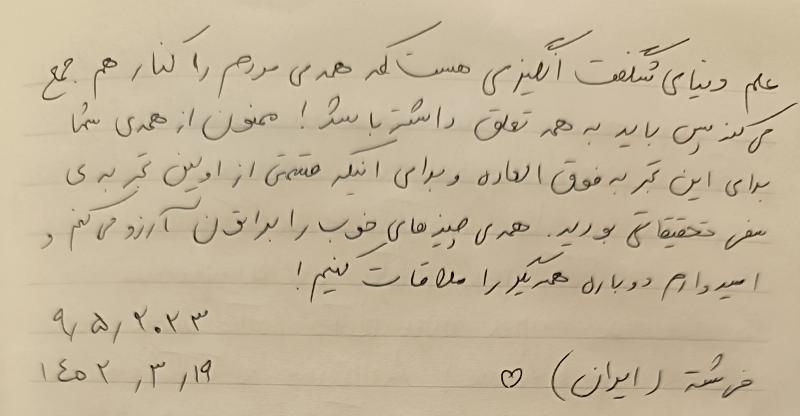

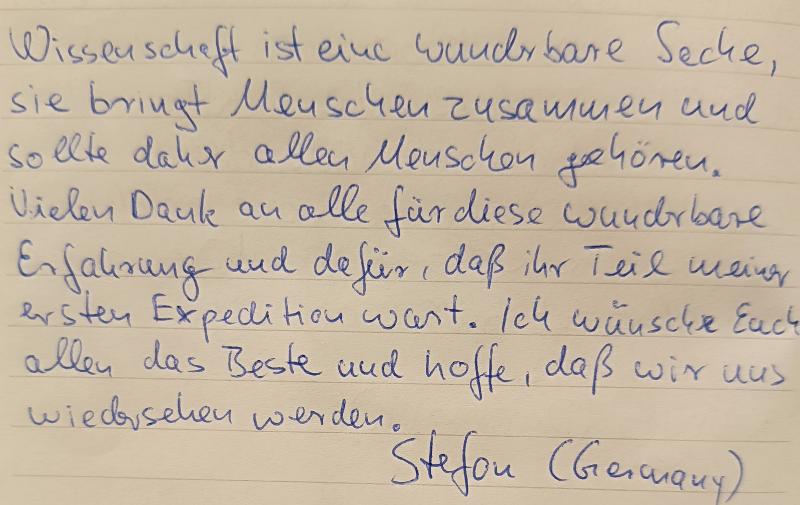


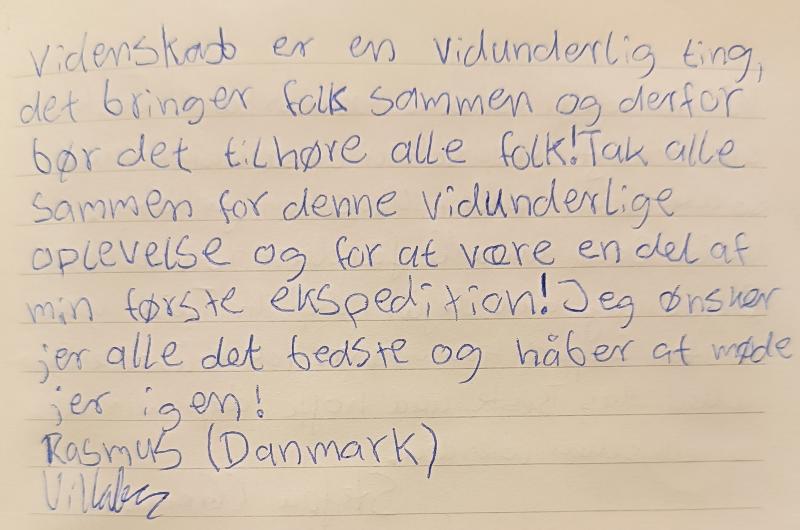
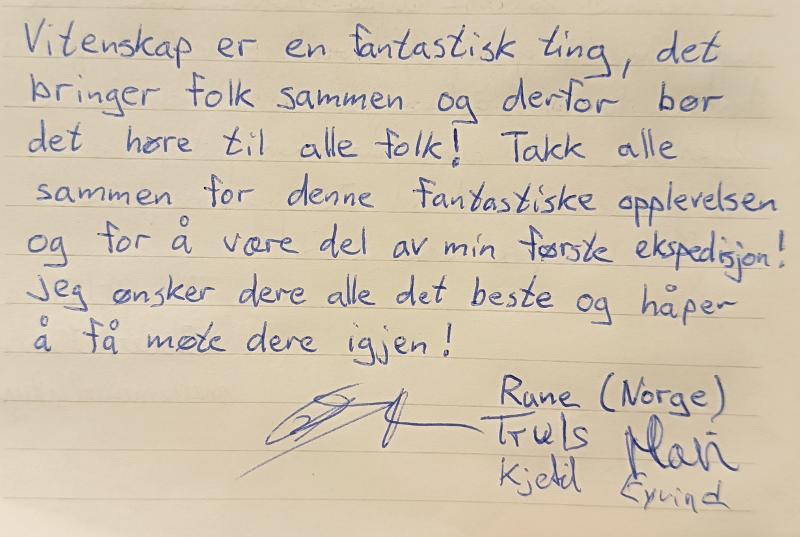
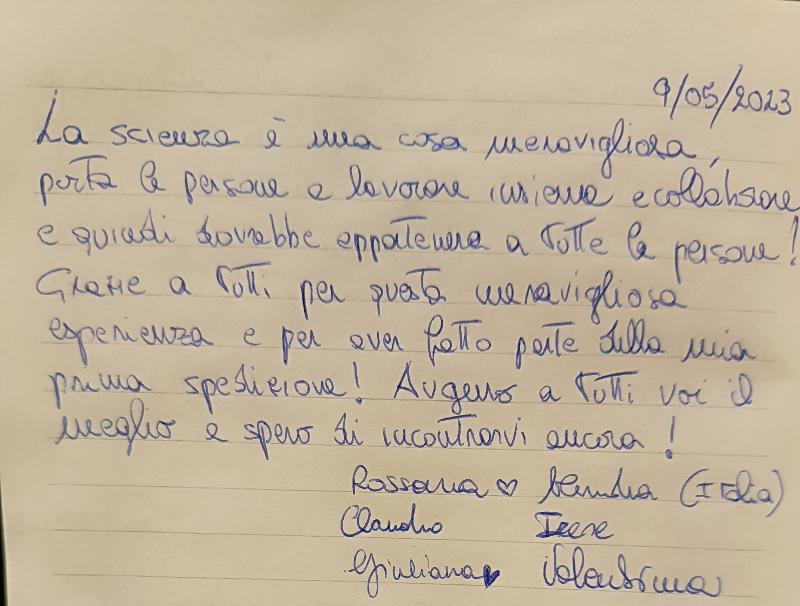
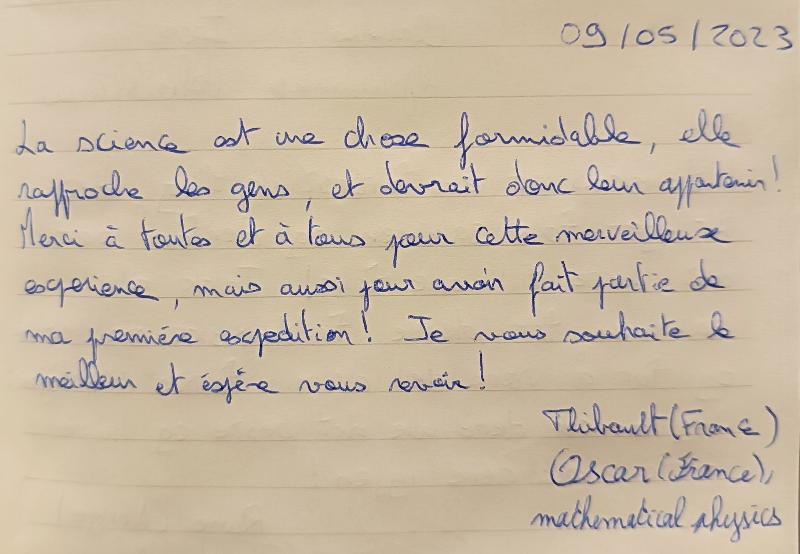
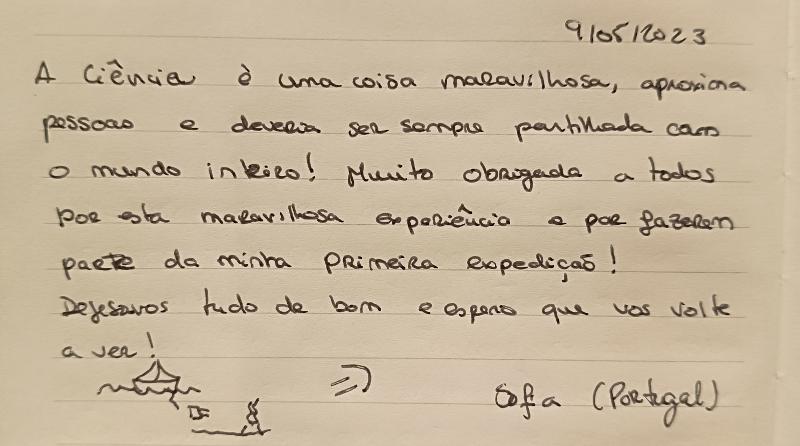
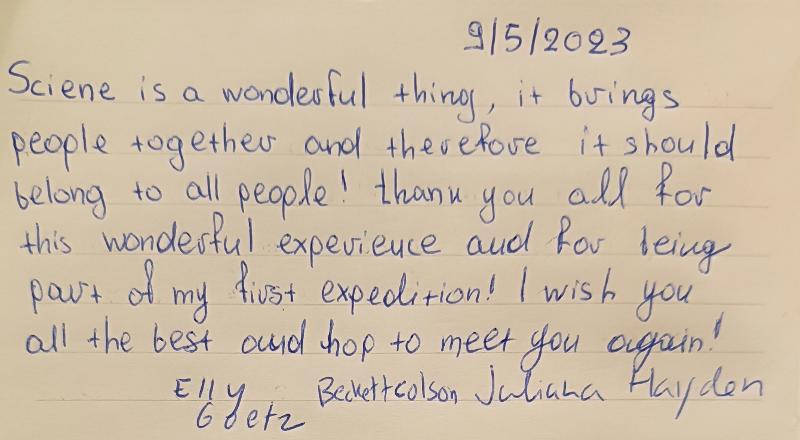
As a student on the AKMA3 cruise I have seen and learned a great many things. First of all, it has been amazing to see this whole big “machinery”, that is the cruise operations, work in action. The ROV crew is advised by experts, guiding where to go and what to sample, the ROV camera is observed closely by scientists and logged so that the samples can be labeled accordingly, and the footage found again, the people in the labs are processing the samples brough up from the seafloor carefully splitting and categorizing according to the system established. Everything must be coordinated with the crew of the ship and the captain of course. I perceive it as a very delicate piece of mechanic clockwork. Everything has its own purpose, specialization, and must be in perfect synchronization with the other pieces. If this is achieved, it all runs smoothly. Instead of showing the time however, the product of this machinery is to document and sample the things we are discovering so that new knowledge can be extracted about methane in the arctic ocean.

I have also seen the impact that humans have on the ocean floor, and this has left a mark on me. We have seen a bunch of trash on the seafloor, but this was to be expected. What astonished me more was the impact of trawling on the seabed. Where trawling has been practiced, the seafloor was a barren desert but inside pockmarks and depressions where the trawling could not reach, there was an abundance of life. Meadows of tubeworms, anemones, and small reeflike structures with all sorts of alien creatures thriving in the cold dark.
Being inside the ROV container was an experience in itself. It feels like out of a sci-fi movie. Two pilots are sitting in a control seat taking turns to control the ROV “Aurora”. It looks like a pilot seat from a spaceship, having an array of different handles, buttons, and controllers and in front of them is a wall completely plastered with screens with even more information windows.
I was surprised to learn that there were as much seepage going on in the Barents Sea as there is. We obviously sought out the biggest flares and most of them seemed to have on or more continuous streams of bubbles dancing up through the water column but every night there was observed between a couple and over hundred flares during transit. I had no idea that gas seepage was this rigorous and widespread, but it just goes to show that this area is definitely worth investigating
On a sidenote I have also learned that popcorn-cake is not that bad and Bach´s divine cello sonatas seem to have a curing effect seasickness.
I can safely say that this cruise has been an exciting adventure that I will remember for a long time.
When I started to study Geology at University I have never imagine that one day I would have the opportunity to take part of an amazing experience like an oceanographic research expedition in the middle of the Barents Sea, above the Arctic Circle.
This was my first research cruise, in spite of the sea sickness that put me KO in the first days, I was still able to adapt and take part to the different activities on board.
It was amazing to watch the ROV dive, to discover the bottom of the sea with its inhabitants and its secrets and to collect a lot of samples from there.
Every sample collected was then analysed in the lab of the ship. In the biology lab, I could observe and help biologists cataloguing biological samples like anemones, sponges, worms and a lot of sea stars, and one of my favourite was the sun sea star shaped like the sun with her eleven legs. Another thing that I was able to observe during the cruise was the seismic acquisition. It was very interesting for me because I used, studied and interpreted seismic profiles during my master thesis.
But the most exciting experience for me was to actually develop and process the gravity cores.
I always saw the cores in the University labs, already analysed and I studied it, I also use the data from core’s analysis, but I have never done it and I have never seen a core sampling, so for me it was quite impressive to see how the gravity core is and works. But the funniest part was to recover the sample from the seafloor together with the other students under the supervision of a senior scientist. We pulled out the sample from the corer that is a PVC tube ad we putted it on the deck to measure and cut it. Every piece was one meter long and need to be plug on order to keep the sediments inside. It very important that every plug is labeled signed the top and the bottom to recognise the orientation of the core. It was very fun because we had to work outside on deck and all of us get very dirty with mud, a lot of mud, during the process and at the end we had to wash each other out with the fire pump. We did a great team work, helping each other, work all together and of course work in team is the best thing that I learned from this experience. AKMA3 team was a very great team composed of people from all over the world and I’m so glad for the the possibility that I had to be a little part of this big project of knowledge sharing and wonderful scientific discoveries.
It was my first experience onboard; I'm talking about AKMA3 expedition (April 29 - May 10).
I lived in the moments that I may never experience in the future. I believe that people should be so lucky to experience such moments.
When I was visiting ROV control cabin, a heart shaped patch of tube worms on the sea floor impressed me a lot; I felt that the underwater world is showing its love to me in this way. I'm sure I will also fall in love with them as We’re going to make the photo mosaics of the area.
My lucky story doesn't end with the tube worms, discovery of a mud volcano was another thing that I experienced. We named it Borealis and I'm so happy to be a member of the team who discovered this volcano for the first time.
The last day of the expedition was also unforgettable for me; watching oil sleeks and dolphins moving around when you are standing on deck 9 is not something that I can do one more time in my life.
I will try to do my best working on the collected data and hope to see myself onboard again.
Ciao AKMA!
Hi everyone! I’m Elly from the Earth and Planetary Sciences department at Yale University. I am onboard to study foraminifera for my dissertation research focused on dormancy.
If you think that all single-celled organisms are simple and unsophisticated, you would be wrong! Foraminifera are complex micro-organisms that live primarily in the ocean, with some inhabiting the water column as plankton and others on the ocean floor. They are fierce predators using extensions of their cytoplasm called “pseudopodia” (imagine a sticky spiderweb-like network) to capture bacteria, algae, and even tiny animals. They build intricate shells called “tests”, which are typically made from calcium carbonate and these tiny shells can make up a large proportion of sand grains in some beaches around the world. The minerals they use come from the seawater around them, so fossilized foraminiferal tests can be used to learn about past climates and ocean chemistry through isotope geochemistry. The vast majority of foraminifera are microscopic, about the size of the dot on an “i”, but some can grow over 10 cm, all while being a single cell!
For my PhD research I am studying the enigmatic process of dormancy in foraminifera. Dormancy, which includes familiar phenomena such as sleep and hibernation, is a biological process in which the organism slows its metabolism, usually in order to survive inhospitable environmental conditions. Foraminifera as a group date back to the Precambrian, making them over 600 million years old, meaning they have survived all of the “big five” major mass extinctions. Dormancy may have a role to play in this success over evolutionary time, allowing them to “wait out” environmental perturbations of varying magnitudes. Despite its importance, dormancy is vastly understudied in this group, so we do now know how long they can stay in a dormant state and the mechanisms underlying the associated biological processes. I hope to begin to answer these questions through my PhD research.
On the Kronprins Haakon I am searching for foraminiferal “propagules”, their dormant juvenile dispersal stage (a.k.a. baby foraminifera). These propagules are thought to have a wide dispersal potential and can remain dormant in the sediment until the surrounding environmental conditions are right, when they will resume growth to adulthood. I am sampling surface sediments from core samples, which I then wash through a fine mesh sieve in an attempt to separate the mature foraminifera from propagules. Once I am back at Yale, I will assess the diversity of both populations through “eDNA metabarcoding”, which identifies different species in the sediment using DNA rather than having to pick them out individually and identify them by eye under a microscope.
The sieve I am using (above) has a very fine mesh with holes smaller than 1mm across!

Akma 3 is my first arctic cruise, I really didn’t know what expect: how it will be to work with arctic samples in arctic weather? It’s spring and it’s still snowing.
Now I can tell that it’s an amazing experience! The Akma project is so interesting and involves many different scientific areas, all convolving together to understand and study methane seeping in the arctic.
During this cruise every day was an exciting day, with lot of discoveries and much to take in. Starting from following the ROV Aurora dives all together, spotting bubbles, bacterial mat and arctic species all around. I’m impressed with the ability of moving it around so smoothly hundred of meters below the sea surface. Once the ROV reaches the vessel, the processing of the different samples starts and, under the direction of the senior scientists, everyone helps everywhere is needed, having fun and learning on field. The sediment samples taken by the ROV, multi-corer and gravity corer, need to be prepared. First step is to retrieve the sample: it’s the hardest part, a lot of unscrewing and sawing, feeling like you are gonna be a carpenter. Once the cores are ready, everyone need a portion for their research and that’s where the precision kicks in: cutting mud, slicing mud, freezing mud, washing mud, mud is fun!

Last but not least, my area of study: geophysics! How exciting is the seismic acquisition with the airgun? Very exciting! Two mini-GI airguns seismic sources have been used together with compressor system. They are deployed using a large A-frame at the stern of the ship. On this cruise we set up a single channel acquisition meaning that only one small hydrophone array (also called streamer) was deployed at sea in order to receive the signal and sent it to the computer in the seismic room. Here, an acquisition software display all the traces continuously during the procedure, returning a raw image of the subsurface. According to the sea bottom condition, it can penetrate hundreds of meters below the seafloor allowing us to see what’s in depth. With seismic, we could see gas accumulation areas below the seeping and around it. Allowing us to have an idea of where the gas bubbling at the sea floor comes from and to see the pathways that the gas follows during migration. How thrilling is this?

Icing on the cake: the discover of the Borealis Mud Volcano! I studied mud volcanoes for three years during my PhD but I alway saw them in seismic lines! When the image from the ROV appeared on the scree it took my breath away! Everyone on board was so galvanised. You could feel enthusiastic vibes all around around in the ship. It was a unique experience and I can’t believe I took part in this discover. However, I have to admit that my first thought was not so scientific and rational: “I want to go down there and stick my arm in it!”.
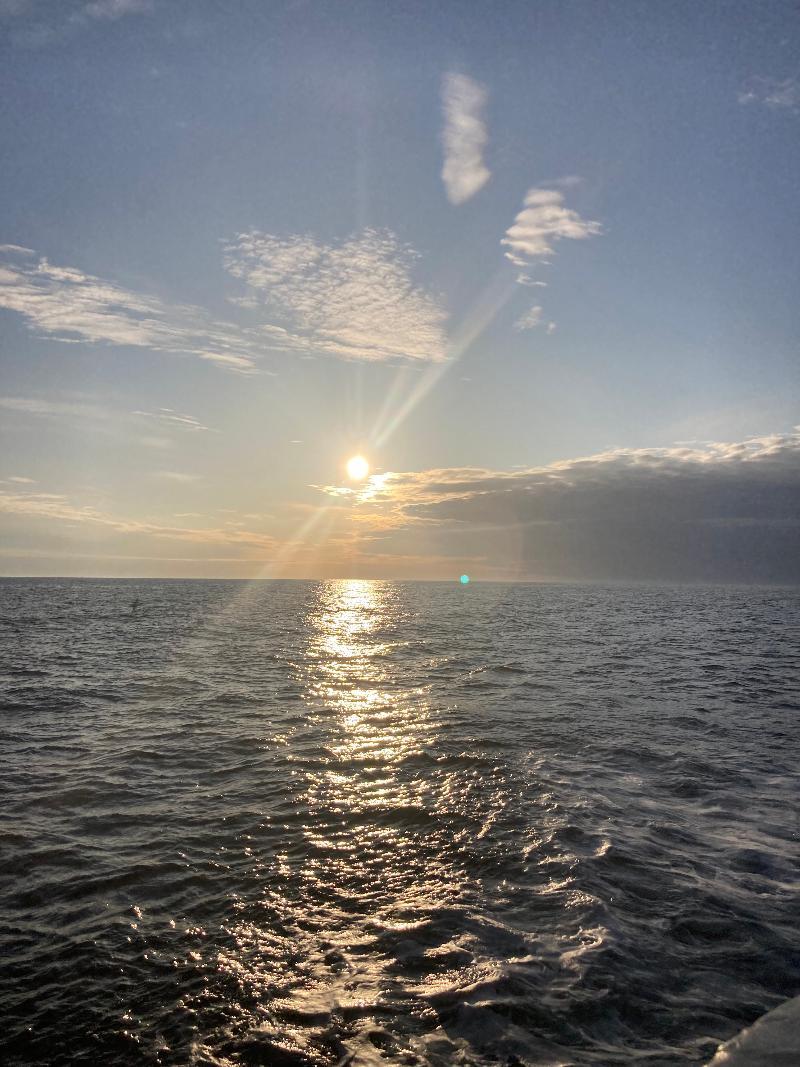

It has always been a dream of mine to be able to travel up north to the Arctic Circle and I am very excited to have the chance to be part of the AKMA3 expedition. It was really an eye-opening experience on board R/V Kronprins Haakon and inspiring to see how the different fields of science come together during this expedition.
Just like how the sun never sets here, the work continues around the clock. Acquisition and primary interpretation of bathymetry data throughout the night provides information for the sampling that takes place the next day. The collection of samples is mostly done using the ROV Aurora, which is a stunning piece of equipment. The ROV is controlled remotely from the vessel and is able to collect sediment cores, carbonate rocks and biological samples from water depth of up to a thousand meters with great precision. Watching the live feed of the ROV never gets boring – be it the excitement of finding bacterial mat or seeing methane gas bubbles, or the nervousness while the ROV collects the sediment cores, or simply be amazed by the underwater biodiversity in the Arctic waters. After a few hours of exploring the sea floor, the ROV then comes back on board and the various samples are swiftly taken care of by the respective groups.
Probably due to familiarity, I was mostly helping with the sub-sampling of sediment cores, and it was really fun learning and slicing the muds from the different types of corers used. At times when the weather and water conditions allow, sediment samples were also collected using gravity and multi-corer (which I must admit, is a big highlight for me as it was my first time seeing this equipment in action). It can be quite challenging to sub-sample these sediment cores as most of us were unfamiliar with this equipment. Processing of samples often extends into the wee hours as the gravity and multi-corer were usually deployed at night. Tired as we were, it was enjoyable working with other enthusiastic friends on deck and in the labs.

Another highlight of the trip is to have helped put together a small outreach kit that will be sent to schools for students to learn more about foraminifera. Foraminifera are microorganisms found in most marine environment and are widely use as proxies for environmental studies. As part of my research was on the fossil foraminifera found in Singapore, it is really exciting to see how the arctic foraminifera fauna differs from that of the tropics. We picked out some foraminifera from the sediments collected and put them into a slide to be used with the “foldscope” as part of the outreach kit. It is really fascinating to be able to observe the foraminifera specimen (about 0.5 mm) using the mini microscope made up of folded papers!

Having the chance to be involved with all the various type of work on board, be it slicing muds, picking out little critters from rocks or looking at bathymetry data really enhanced my whole experience on this expedition. Every day on the research vessel was action-packed, and I have learnt so much during these 12 days. I am immensely grateful to Prof. Benjamin Horton and Prof. Giuliana Panieri for providing this wonderful opportunity. A big shoutout to all the senior scientists who have selflessly taught and guided us along, and not forgetting the crew members for taking such great care of us and keeping us so well-fed. I am also thankful to have met so many amazing people and for all the friendships forged. Thank you all for making my first cruise expedition so fun and fulfilling amidst all the sea sickness, cold and late-night work. So long AKMA3, you will be missed!


In the book Barefoot: A Surfer’s View of the Universe, Andrew Pacholyk wrote to “live life, one wave at a time.” Not that I have read that book, but I do indeed live my life in waves. In fact, AKMA3 was a beautiful swell that had come crashing into my life.
Having graduated from the University of Tasmania, Institute of Marine and Antarctic Science, I was previously given opportunities to partake in voyages at the Southern Ocean (warmest gratitude to both Professor Mike Coffin and Assoc. Professor Joanne Whittaker). Today, thanks to the opportunity provided by both Professor Benjamin Horton and Professor Giuliana Panieri, I was given the chance to sail with RV Kronprins Haakon in the Barents Sea.

To start off writing my experience, I would like to also give my deepest appreciation to the galley crew and chef for providing wonderful food, snacks, desserts, and services to aid us in our scientific research. I am not kidding – the food was amazing, thanks Kenneth!
AKMA3 got together a group of scientists, engineers, and technicians internationally. We have our daily briefings at 19:00 daily and occasionally a seminar or two from people of different fields. Despite this difference in our nationalities, expertise, and interests, we bonded over laughter, experiences, and cultural exchanges. It created a circle of understanding and respect which is necessary for any group of 32 on an isolated vessel.

In this voyage, I got in touch with what I really wanted to do in Marine Geoscience. Under the guidance of Professor Stefan Buenz and Truls Holm, I was able to observe the seismic airguns being set up and deployed, the general technicalities behind it, and the process of subsurface data collection. Thanks to Rune Mattingsdal for his vast knowledge of petroleum in and around the Norwegian Continental Shelves, I was also able to understand the study sites better and experience putting water column data together. Seismic has never been so fun for me until this trip, so I would like to take the chance and give my utmost sincerity to these people for inspiring me.
The once in a lifetime opportunity came with the deployment of ROV and AUV Pameli. Besides watching how geological and biological samples were collected on the seabed, I had the chance to witness how the ROV team manoeuvre the vehicle. To be honest, it was almost like they were playing Halo underwater. Yet, behind the scenes were tons of discussion, planning, and problem solving. It was amazing to see how the ROV team (Stig Vagenes, Eyvind Ernsten, Patrick Vagenes, and Leighton Rolley) provide solutions to the multiple situations we encounter during sample collection. By the same token, the AUV team (Aurelian Pira, Denis Dausse, Thibault Colombier, and Beckett Colson) also showed us their know-hows in the deployment and operation of Pameli and SAGE (Sensor for Aqueous Gases). The teamwork and enthusiasm which they emit were incredible.


Lastly, not forgetting my Singaporean cabin-mate, friend, manager, shift-coverer, and colleague – Yan Yu Ting. You have been my greatest support and motivation in Norway. Thank you for being patient, crazy, on the ball, and efficiently working with me whenever we pair up. May the rest of the trip go smoothly for us and create amazing memories that we will never forget.
P/S: Norway views are absolutely stunning, but I really really really really miss my nights – Sincerely, a night owl that prefers the moon.

The AKMA 3 oceanographic expedition team is dedicated to sharing water knowledge to inspire the next generation of research leaders from around the world. Our diverse team of early and senior career level researchers onboard the Kronprins Haakon (herein referred to as KPH) are helping to generate water education and literacy that is available to everyone by practising scientific cooperation and knowledge sharing at community, national, regional, and global levels, all while at sea!
During the 2023 expedition in the Southwestern Barents Sea, KPH is working twice as hard, operating as a research vessel AND as a community-based educational platform to better meet the SDGs (especially SDGs 14, 6, 4). On this journey, the team has connected with schools and local communities in Tanzania, Singapore, Peru, Portugal, Italy, Greece, and Iran to provide a real-time, multisensory learning experience about the Arctic, the ocean, the deep sea, and marine biology.

This year, AKMA 3 cruise leader Giuliana Panieri and doctoral student Juliana Hayden virtually welcomed onboard Agnes Haule, a legal advisor and educator from Songea and Matimira, in the Ruvuma region of Tanzania. Agnes is currently collaborating with different school and communities in the area, including the Nyerere Medium kindergarten, the Secondary School of Matimira and the Vita Herdis Vocational School.
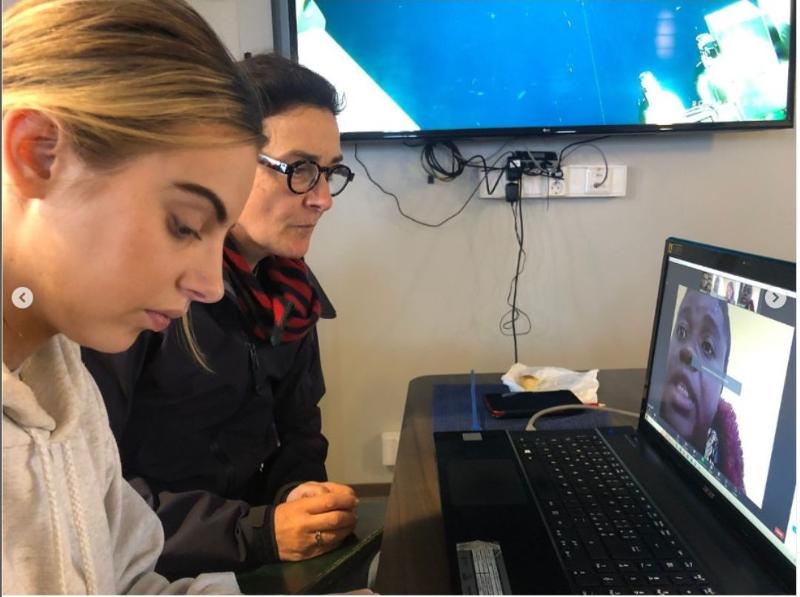
Through remotely participating in the expedition, Agnes was able to observe the seafloor and water column for herself to learn about the connections between our seas, land, and rivers. During an interactive, hybrid (online and in-person) roundtable discussion between Agnes, Giuliana, and Juliana, the participants were able to share their expertise in, and experiences with, water science, environmental governance, and sources of local knowledge from Norway’s High North and the Southern Highlands of Tanzania.
The opportunity to virtually bring Agnes onboard KPH is an exciting example of how everyone, no matter where they are in the world, can take an active role in environmental monitoring, observation, and investigation. Agnes shared that she would like to see learners of all ages in Tanzania take part in interactive learning experiences with water. In her professional experience as an educator, she has seen how climate vulnerable regions, such as her own, need to create “home-grown scientific communities” that can best respond to their own unique water challenges.
Wrapping up the roundtable it became apparent that all participants and their respective research institutions and schools and community groups are in fact looking to create ways to integrate and promote local knowledge and capacity building in water sciences. After this initial cooperation, Agnes and the AKMA 3 team members from UiT, The Arctic University of Norway, are seeking to develop a partnership in water governance projects that advance environmental stewardship and participation in decision-making among pupils, university students, and all lifelong learners. KPH’s “two Julianas,” and Agnes are so excited for the next steps in developing their collaboration for knowledge sharing and co-creating!
